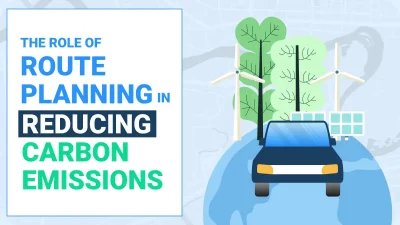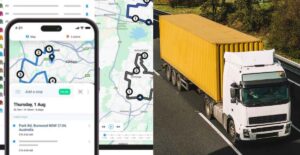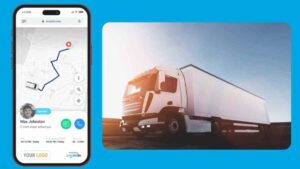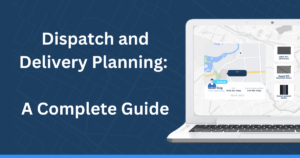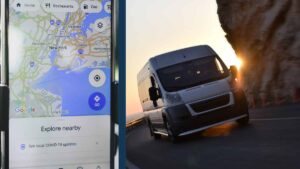Reducing carbon emissions has become a critical goal in addressing climate change. The transportation sector, responsible for a significant portion of carbon dioxide emissions, plays a crucial role in achieving this objective. This is where the role of route planning in reducing carbon emissions comes in.
With 17% of global greenhouse gas emissions, transportation is the second-fastest-growing source of emissions in the world behind the power industry.
Implementing green logistics practices, such as optimizing routes, using alternative fuels, and employing fuel-efficient technologies, can greatly contribute to reducing fuel consumption and, subsequently, carbon emissions in the transportation system. By embracing innovative solutions and reducing fuel usage, we can make significant strides towards creating a more sustainable transportation system that minimizes its impact on the environment.
What is route planning?
The process of choosing the fastest route from one location to another is known as route planning. Historically, route planning has been done with paper maps or simple GPS devices, but as technology has advanced, it has gotten more complex.
A variety of variables, including distance, traffic patterns, and road conditions, are taken into account by specialized route optimization software and GPS devices used today to generate efficient routes for automobiles. Effective route planning has advantages beyond only time and money savings; by lowering carbon emissions, it also improves the environment.

The Role of Route Planning in Reducing Carbon Emissions
The burning of fossil fuels by cars makes transportation a substantial source of carbon emissions. The type, age, and state of the cars, together with traffic congestion, can all have an effect on the emissions produced. By making cars go farther or being delayed in traffic, which increases excessive fuel consumption and emissions, poor route planning can also contribute to unnecessary emissions.
Optimizing routes for fuel efficiency
Route planning can significantly cut carbon emissions by optimizing routes for fuel economy, which is one of the main ways it can do so. The most effective routes for vehicles to travel can be created using route optimization software by carefully taking into account parameters like distance, traffic patterns, and road conditions.
By minimizing pointless detours, avoiding congested regions, and cutting down on idle time, this can save fuel costs and emissions. Avoiding congested areas or choosing routes with fewer stoplights, for instance, can help vehicles maintain a constant speed and lessen the need for frequent acceleration and deceleration, which can use up more fuel and produce more emissions.
Considering environmental factors
When planning routes, sophisticated route optimization software can also take environmental factors into account. It can, for instance, avoid routes that pass through sites that produce a lot of emissions, such as heavily industrialized areas or areas with poor air quality, to lessen the impact of emissions.
It is also possible to steer clear of routes that pass through delicate ecological areas, such as conservation zones or designated wildlife habitats, to decrease the environmental impact on these locations. By including such environmental elements in route planning, emissions can be decreased and ecologically friendly transportation alternatives can be promoted.
Incorporating electric and hybrid delivery vehicles
Planning delivery routes can promote the usage of shared mobility services, public transportation, and other forms of transportation including biking and walking. This will encourage environmentally friendly transportation methods.
For instance, route optimization software may recommend routes that minimize the use of individual automobiles and emissions by including public transit, such as buses or trains, for a portion of the journey. It can also suggest routes that take shared mobility options like carpooling or ridesharing into account.
These options can reduce our carbon footprint and the number of vehicles on the road. Moreover, it can suggest walking or bicycling routes, promoting zero-emission active transportation options.

Conclusion
Route planning is essential for businesses wanting to reduce carbon emissions and reduce fuel consumption. Innovative technologies, like the distribution management software from Locate2u, provide effective solutions that optimize routes, use less fuel, and eventually help the world’s efforts to cut carbon emissions. We can make major strides toward a more sustainable transportation system by adopting green logistical practices and utilizing cutting-edge solutions.
The adoption of contemporary technology, such as Locate2u’s delivery management software, can be a vital enabler in reaching this goal. It is crucial for businesses and industries to prioritize minimizing carbon emissions and fuel consumption through smart route planning tactics. By lowering our carbon footprints and building a more sustainable planet, we can jointly work toward a more environmentally friendly future.
About the author
Marketing Coordinator at Locate2u having completed a Bachelor of Creative Arts, majoring in English Literature and Creative Writing. I have extensive experience in editing and proofreading, as well as creating content for a range of audiences.

